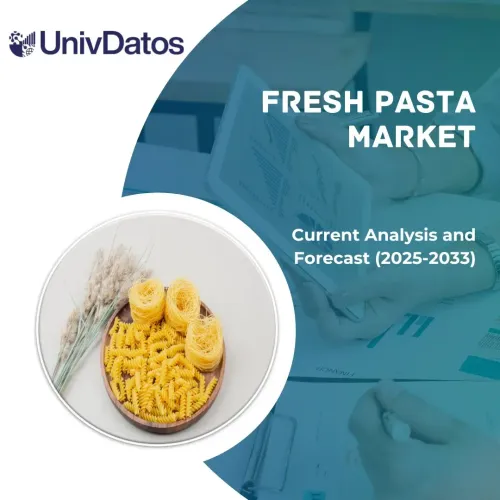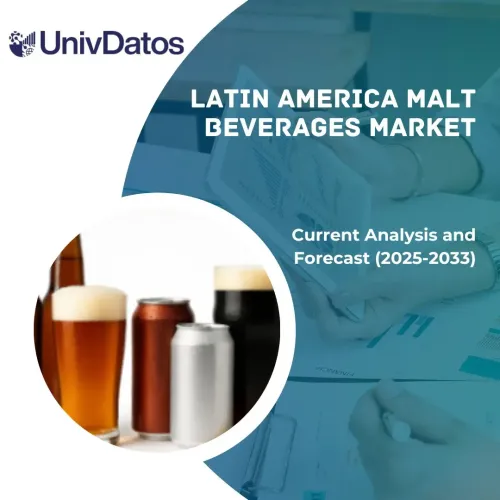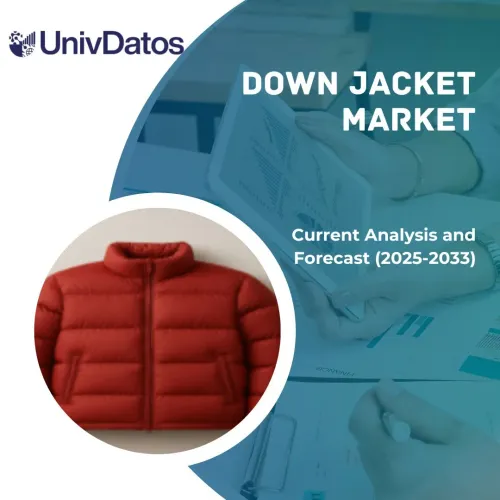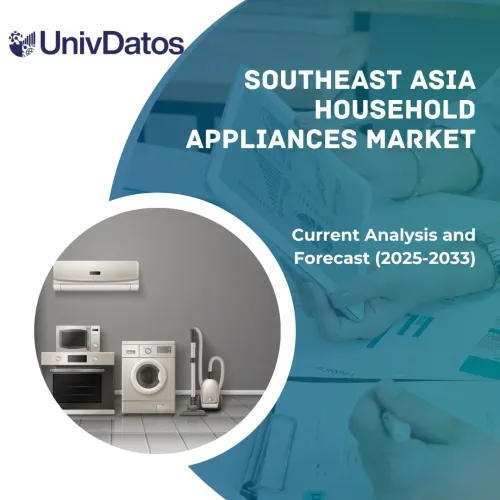- Home
- About Us
- Industry
- Services
- Reading
- Contact Us
Mexico E-Commerce Market: Current Analysis and Forecast (2025-2033)
Emphasis on Product Category (Clothing & Footwear, Consumer Electronic & Accessories, Personal Care & Beauty Products, Sports, Leisure & Hobbies, Home & Garden, Jewelry & Watches, Books, Music & Media, Toys, Household Appliances, and Others); Platform Type (Marketplace Platforms, Direct-to-Consumer (D2C) Brand Websites, and Social Commerce Platforms); and Region
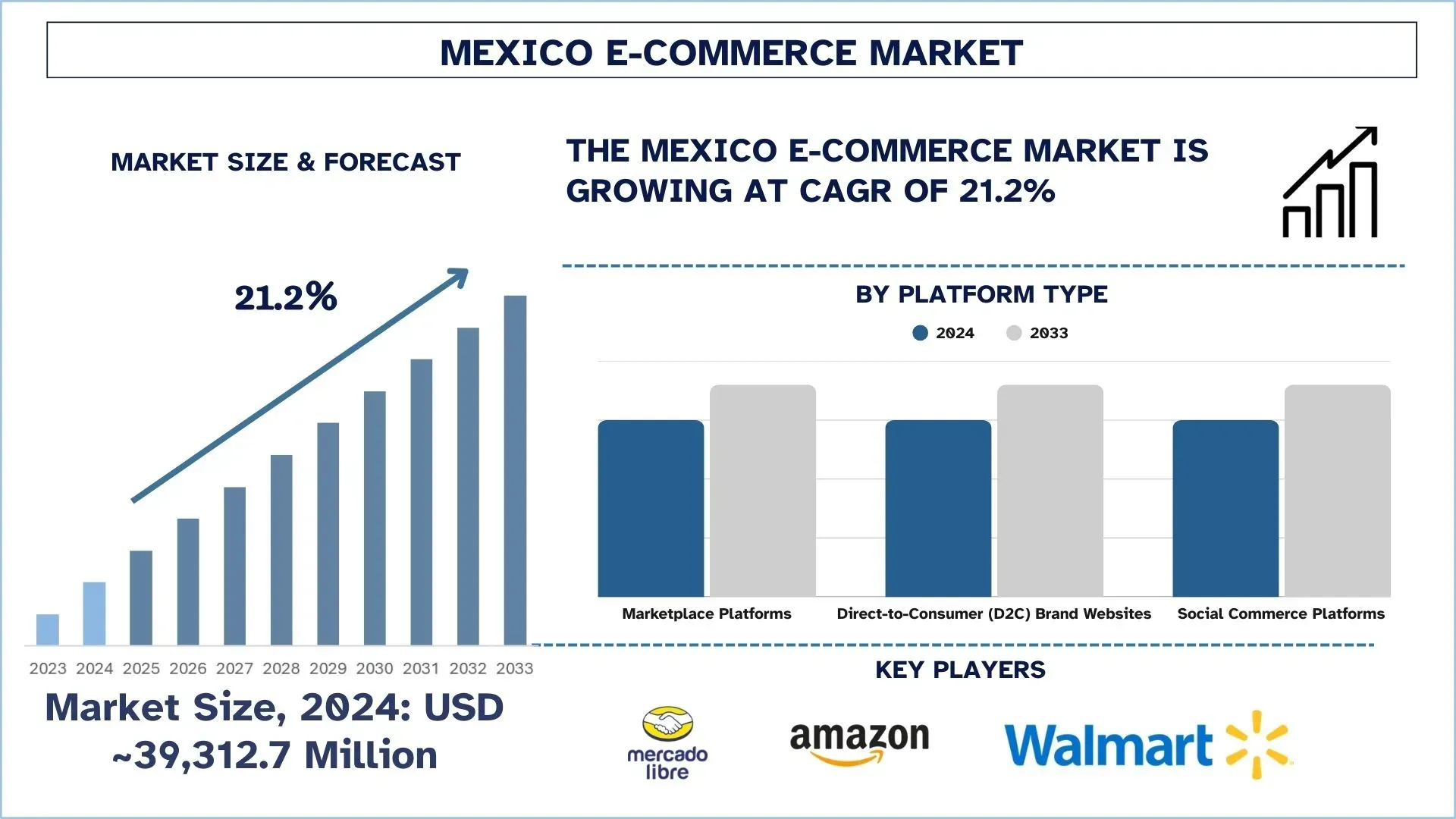
Mexico E-Commerce Market Size & Forecast
The Mexico E-Commerce Market was valued at USD ~39,312.7 million in 2024 and is expected to grow to a strong CAGR of around 21.2% during the forecast period (2025-2033F), owing to the rising internet and smartphone penetration, combined with improved logistics.
Mexico E-Commerce Market Analysis
Mexico’s e-commerce sector is one of the biggest in Latin America, with a market of about USD 39.3 billion expected in 2024. More people are using the internet and smartphones, the middle class is growing, and better logistics are pulling the growth. More and more, buyers are turning to e-commerce because it is simple, has a wide range of options, and is affordable. Expanding growth in the market is linked to the launch of mobile wallets and Buy Now, Pay Later services, reaching even lower-middle-income and unbanked consumers.
Going forward, several regions in Mexico show strong signs of quick development in the e-commerce sector. Close to 80% of online sales now come from mobile commerce because more people use smartphones and the internet on their phones. Growing interest in social commerce means platforms like TikTok Shop are launching in Mexico, drawing in brands based both inside and outside of Mexico. The fintech industry is seeing fast growth and aims to support the unbanked as well as simple online transactions. All this progress shows Mexico’s e-commerce sector will likely flourish, founded on technology and greater availability.
In December 2024, Prosus entered into a definitive agreement to acquire Despegar, a leading Latin American online travel agency, for $19.50 per share—a 33% premium over its closing price. The deal, approved by Despegar’s board, will expand Prosus’s Latin American ecosystem to over 100 million customers across e-commerce, travel, and fintech sectors. This strategic move aims to bolster Prosus's presence in the region's digital commerce ecosystem. Concurrently, investments in the Mexican startup scene have surged, with venture capital transactions increasing by 59% in 2024, totaling $1.674 billion. This influx of capital is fostering innovation and the emergence of new e-commerce platforms, enhancing competition and service offerings.
Mexico E-Commerce Market Trends
This section discusses the key market trends that are influencing the various segments of the Mexico E-Commerce market, as found by our team of research experts.
Rise of Mobile Commerce
Mobile commerce is now more important in Mexico due to how quickly mobility has risen. In 2024 and beyond, as more than 95 million people with smartphones get involved in e-commerce via their phones, mobile e-commerce will surpass 70% of all sales. Doing mobile shopping is so easy, which is likely why many younger people feel drawn to it. Mercado Libre and Amazon are updating their mobile apps for users, and fintech companies are giving app users new options for completing payments. The result is that online stores are trying to create ads for mobiles and holding flash sales in their efforts to boost buying and reduce unwanted shopping cart abandonments.
Expansion of Social Commerce
Due to the increasing usage of Facebook, Instagram, TikTok, and WhatsApp, more Mexicans are choosing to buy goods online. At present, around 9 out of 10 Mexicans who go online every day use social networks, and it is becoming easier for them to access information as well as purchase goods there. Brands are adapting to evolving customer trends, thanks to influencers, online shopping events, and better ways to make purchases. At the forefront of e-commerce apps is Facebook, followed by Instagram and TikTok, adding in-app boutiques, shop tabs, and specialized tools for Mexican creators. Many micro and nano-influencers in country areas are helping bring e-commerce to more rural places.
Advancements in Logistics and Delivery
E-commerce growth in Mexico is strongly driven by the fast development of logistics and delivery services. Today’s logistics suppliers are investing a lot in improvements for last-mile delivery, advanced warehouses, and fulfillment centers. In 2024, an automated sorting facility in Mexico City opened by Cainiao, using AI technology, sorted through many packages daily, numbering more than 500,000. Afterward, Mercado Libre worked on its regional services to make sure orders for major city dwellers arrive within just a day. Both companies are partnering with smaller shops to cover areas they haven’t delivered to before. Some parts of Jalisco and Puebla already feature pilot projects for drones that drop off packages. Because of these improvements, it’s now easier for Mexico to handle shipments, and people are much more satisfied with shipping.
Mexico E-Commerce Industry Segmentation
This section provides an analysis of the key trends in each segment of the Mexico E-Commerce market report, along with forecasts at the regional and state levels for 2025-2033.
The Clothing & Footwear market held the dominant share of the Mexico E-Commerce market in 2024.
Based on Product Category, the market is segmented into Clothing & Footwear, Consumer Electronic & Accessories, Personal Care & Beauty Products, Sports, Leisure & Hobbies, Home & Garden, Jewelry & Watches, Books, Music & Media, Toys, Household Appliances, and Others. Among these, the Clothing & Footwear segment is leading the market. Shopping for clothes and shoes online in Mexico is popular since the experience is nice, prices are reasonable, and there’s a lot to choose from. Recently, many young people living in Mexican cities have turned to using technology, and major brands now upload new clothes online, give discounts for a while, and put effort into making returns easy for customers. Attention to mobile services and social media by Shein, Amazon, and Coppel is allowing them to lead the fast growth of fashion in Mexican e-commerce.
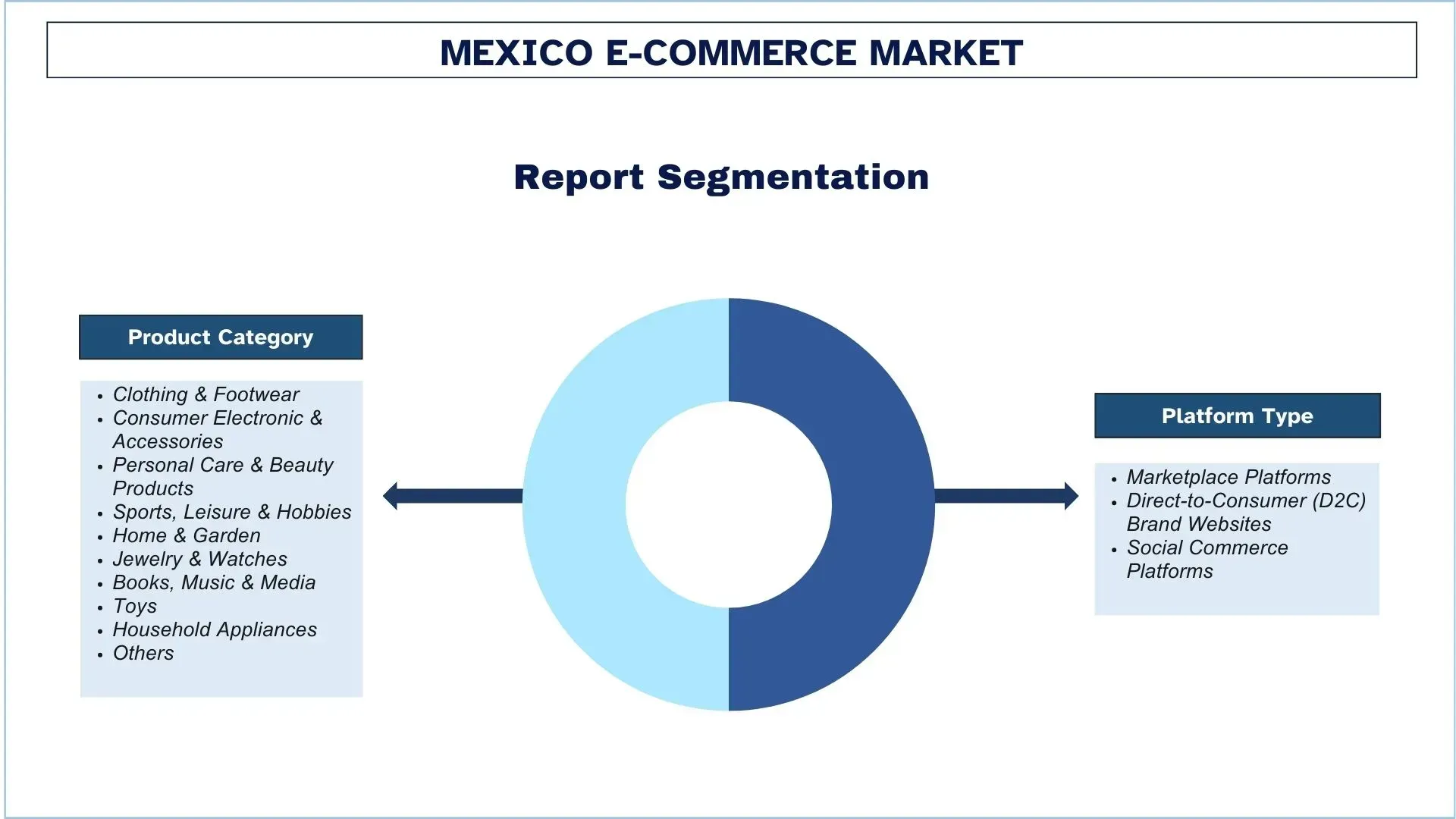
The Marketplace Platforms segment is expected to grow with a significant CAGR during the forecast period (2025-2033) of the Mexico E-Commerce Market.
Based on Platform Type, the market is segmented into Marketplace Platforms, Direct-to-Consumer (D2C) Brand Websites, and Social Commerce Platforms. Among these, the Marketplace Platforms segment is leading the market. What makes these platforms stand out in Mexico’s e-commerce market is their simplicity and variety for all buyers and sellers alike. Mercado Libre, Amazon Mexico, and Coppel are among these platforms, offering many different goods and services at fair prices and arranging convenient deliveries as well as flexible ways to make payments. Because they are so easily available in most parts of the country and include buyer protection and simple returns, millions of people choose them when shopping online. Moreover, offering fast delivery, personalized shopping, and onboarding resources for merchants has helped Amazon grab even more customer shares in Mexico’s online shopping industry.
Central Mexico Region will grow the Mexico E-Commerce market during the forecast period.
The area around Mexico City, which is central Mexico, stands out for its energy and large population. The region is the center of Mexico’s economy, politics, and culture, and it produces a major part of its GDP. The country’s modern infrastructure, strong logistics systems, and many people online help e-commerce grow. Besides, having many retail firms, startup companies, and rising disposable income among the middle class helps increase online shopping. The significance of Central Mexico and its people as consumers means it is a main market where e-commerce firms want to rapidly increase their business.
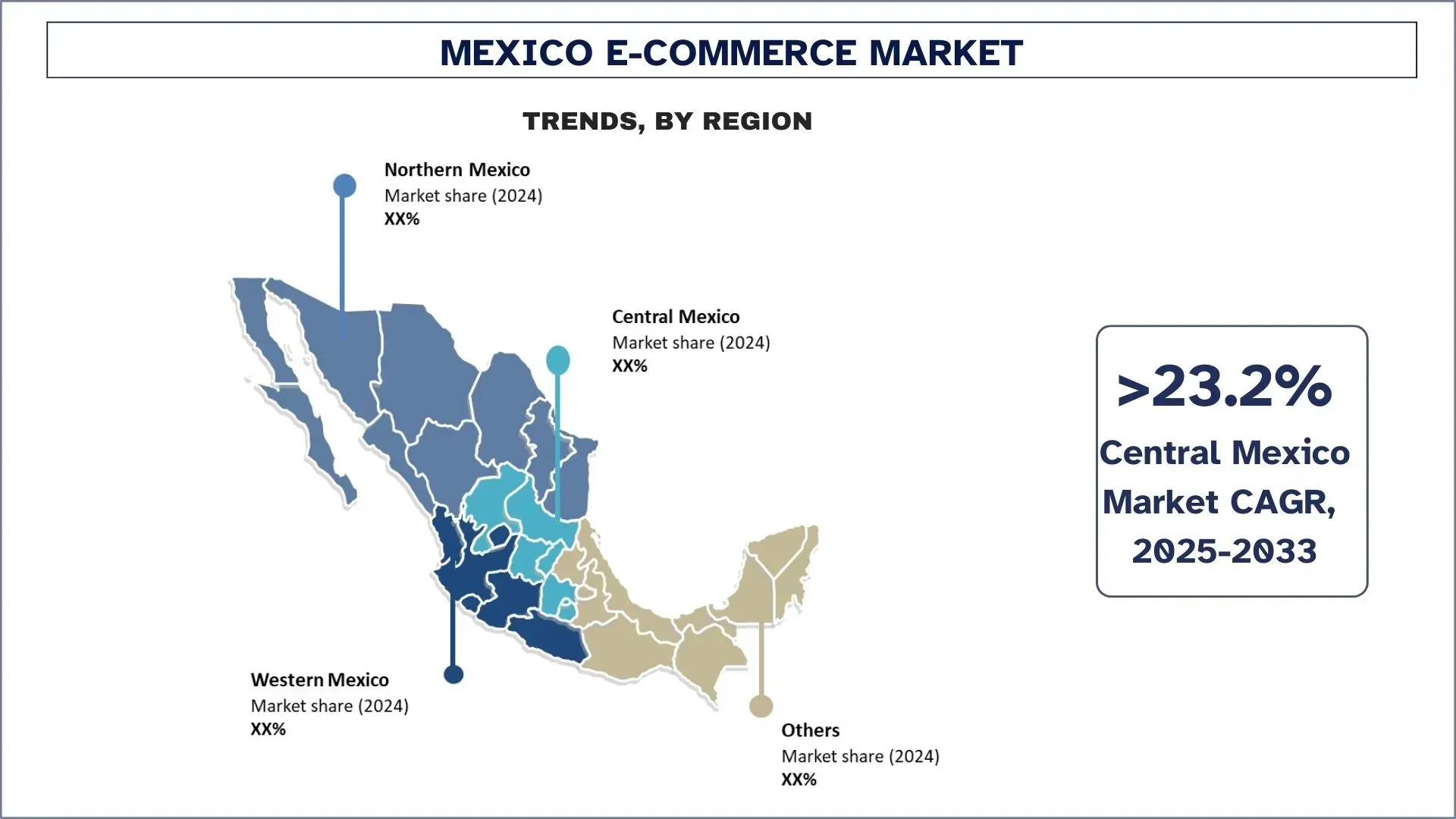
Mexico E-Commerce Industry Competitive Landscape
The Mexico E-Commerce market is competitive, with several global and international market players. The key players are adopting different growth strategies to enhance their market presence, such as partnerships, agreements, collaborations, new product launches, geographical expansions, and mergers and acquisitions.
Top Mexico E-Commerce Companies
Some of the major players in the market are Mercado Libre, Amazon, Walmart, Liverpool, Shein, Coppel, The Home Depot, Sam’s Club, Costco, and Sears.
Recent Developments in the Mexico E-Commerce Market
In December 2024, Prosus entered into a definitive agreement to acquire Despegar, a leading Latin American online travel agency, for $19.50 per share—a 33% premium over its closing price. The deal, approved by Despegar’s board, will expand Prosus’s Latin American ecosystem to over 100 million customers across e-commerce, travel, and fintech sectors. This strategic move aims to bolster Prosus's presence in the region's digital commerce ecosystem. Concurrently, investments in the Mexican startup scene have surged, with venture capital transactions increasing by 59% in 2024, totaling $1.674 billion. This influx of capital is fostering innovation and the emergence of new e-commerce platforms, enhancing competition and service offerings.
Mexico E-Commerce Market Report Coverage
Report Attribute | Details |
Base year | 2024 |
Forecast period | 2025-2033 |
Growth momentum | Accelerate at a CAGR of 21.2% |
Market size 2024 | USD ~39,312.7 million |
Regional analysis | Central Mexico, Northern Mexico, Western Mexico, and Others |
Major contributing region | Central Mexico is expected to grow at the highest CAGR during the forecasted period. |
Companies profiled | Mercado Libre, Amazon, Walmart, Liverpool, Shein, Coppel, The Home Depot, Sam’s Club, Costco, and Sears. |
Report Scope | Market Trends, Drivers, and Restraints; Revenue Estimation and Forecast; Segmentation Analysis; Demand and Supply Side Analysis; Competitive Landscape; Company Profiling |
Segments Covered | By Product Category, By Platform Type, By Region |
Reasons to Buy the Mexico E-Commerce Market Report:
The study includes market sizing and forecasting analysis confirmed by authenticated key industry experts.
The report briefly reviews overall industry performance at a glance.
The report covers an in-depth analysis of prominent industry peers, primarily focusing on key business financials, type portfolios, expansion strategies, and recent developments.
Detailed examination of drivers, restraints, key trends, and opportunities prevailing in the industry.
The study comprehensively covers the market across different segments.
Deep dive regional level analysis of the industry.
Customization Options:
The Mexico E-Commerce market can further be customized as per the requirements or any other market segment. Besides this, UnivDatos understands that you may have your own business needs; hence, feel free to contact us to get a report that completely suits your requirements.
Table of Content
Research Methodology for the Mexico E-Commerce Market Analysis (2023-2033)
We analyzed the historical market, estimated the current market, and forecasted the future market of the Mexico E-Commerce market to assess its application in major regions in Mexico. We conducted exhaustive secondary research to gather historical market data and estimate the current market size. To validate these insights, we carefully reviewed numerous findings and assumptions. Additionally, we conducted in-depth primary interviews with industry experts across the value chain. After validating market figures through these interviews, we used both top-down and bottom-up approaches to forecast the overall market size. We then employed market breakdown and data triangulation methods to estimate and analyze the market size of industry segments and sub-segments.
Market Engineering
We employed the data triangulation technique to finalize the overall market estimation and derive precise statistical numbers for each segment and sub-segment of the Mexico E-Commerce market. We split the data into several segments and sub-segments by analyzing various parameters and trends, including Product Category, Platform Type, and regions within the Mexico E-Commerce market.
The Main Objective of the Mexico E-Commerce Market Study
The study identifies current and future trends in the Mexico E-Commerce market, providing strategic insights for investors. It highlights regional market attractiveness, enabling industry participants to tap into untapped markets and gain a first-mover advantage. Other quantitative goals of the studies include:
Market Size Analysis: Assess the current market size and forecast the market size of the Mexico E-Commerce market and its segments in terms of value (USD).
Market Segmentation: Segments in the study include areas of Product Category, Platform Type, and regions.
Regulatory Framework & Value Chain Analysis: Examine the regulatory framework, value chain, customer behavior, and competitive landscape of the Mexico E-Commerce industry.
Regional Analysis: Conduct a detailed regional analysis for key areas such as Central Mexico, Northern Mexico, Western Mexico, and Others.
Company Profiles & Growth Strategies: Company profiles of the Mexico E-Commerce market and the growth strategies adopted by the market players to sustain in the fast-growing market.
Frequently Asked Questions FAQs
Q1: What is the Mexico E-Commerce market’s current market size and growth potential?
The Mexico E-Commerce market was valued at USD 39,312.7 million in 2024 and is projected to grow at a CAGR of 21.2% from 2025 to 2033, driven by increasing digital penetration and changing consumer behaviors.
Q2: Which segment has the largest share of the Mexico E-Commerce market by Product Category?
The Clothing & Footwear segment holds the largest market share in 2024, due to its popularity among online shoppers and extensive product availability.
Q3: What are the driving factors for the growth of the Mexican e-commerce market?
Key driving factors are:
• Expanding digital connectivity and smartphone usage
• Evolving consumer preferences for convenience and variety
• Growth in digital payment solutions and delivery infrastructure
Q4: What are the emerging technologies and trends in the Mexico E-Commerce market?
Emerging technologies are:
• Mobile and social commerce integration
• AI-powered personalization and product recommendations
• Rise of digital wallets and fintech-driven checkout innovations
Q5: What are the key challenges in the Mexico E-Commerce market?
Key challenges are:
• Low financial inclusion limiting access to digital payments
• The digital divide between urban and rural populations
• Consumer skepticism about data privacy and payment security
Q6: Which region dominates the Mexico E-Commerce market?
Central Mexico is the leading region, supported by:
• High internet and smartphone penetration
• Major urban centers like Mexico City are driving consumption
• A well-developed logistics and delivery network
Q7: Who are the key players in the Mexico E-Commerce market?
Some of the leading companies in the Mexico E-Commerce Industry include:
• Mercado Libre
• Amazon
• Walmart
• Liverpool
• Shein
• Coppel
• The Home Depot
• Sam’s Club
• Costco
• Sears
Q8: How are investors capitalizing on growth opportunities in the Mexico E-Commerce market?
Investors are focusing on:
• Venture capital is pouring into fintech, logistics, and AI startups
• Mercado Libre plans to invest $3.4 billion in 2025 to scale technology, logistics, and financial services
• Focus on omnichannel retailing and last-mile delivery innovations
Q9: What Regulations are affecting the Mexico E-Commerce Market?
Key regulations include:
• 16% VAT on foreign digital services
• Mandatory RFC (Federal Taxpayer Registry) registration for platforms
• Tariffs on low-cost imports to promote fair competition and domestic retail protection
Related Reports
Customers who bought this item also bought

